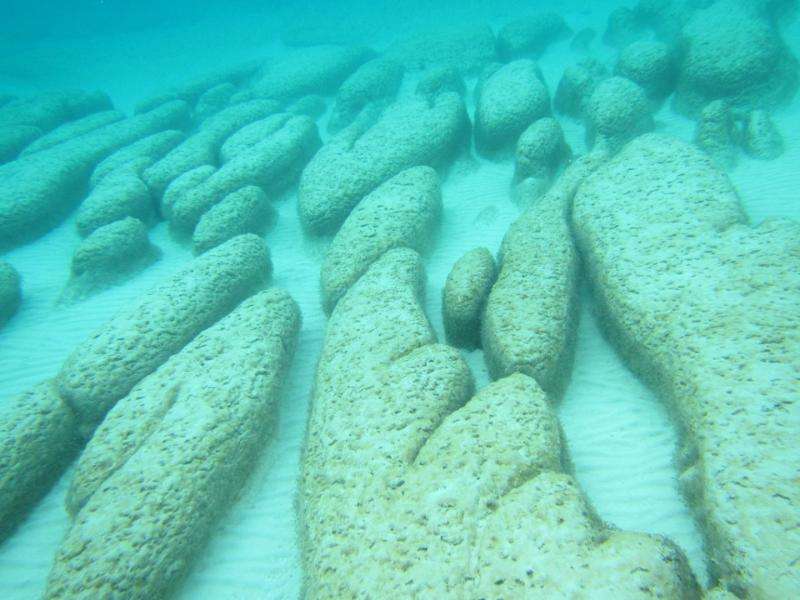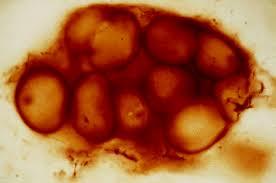
There are two competing thoughts: 1) uplift and erosion occurred due to episodic plate tectonic events where continents collided, merged, and separated, or 2) the massive worldwide glaciation during Snowball Earth (717 to 635 million years) caused significant erosion. Significant uplift and erosion of perhaps 3 to 5km of the Precambrian igneous rocks occurred before the overlying sedimentary rocks were deposited. Rocks above "The Great Unconformity" are sedimentary in origin, contain fossils and were deposited on the surface of the earth. Why is there such a long gap in the rock record that occurred worldwide during this specific time? Many rocks found immediately below “The Great Unconformity” are igneous or metamorphic in origin and crystallized at great depth and pressure. The cause of “The Great Unconformity” is one of the major unsolved questions of geology. A shallow sea encroached across this margin onto the Wyoming craton 230 million years later depositing the cross-bedded Cambrian Flathead Sandstone (520 million years) that rests on the Precambrian rocks in the Shoshone Canyon. The breakup of Rodinia, beginning about 750 million years ago, left the Wyoming craton on the southwestern edge of North America at a tectonically passive margin.


Several significant events in earth evolution occurred during the existence of Rodinia: Wyoming was located at the center of the resulting land mass that stretched pole to pole. They are able to grow tall canopies to capture more light.The Grenville Orogeny occurred 1.3 billion years ago, when the Eurasian and African continents collided with North America to form the Appalachian Mountains and the first “super continent” Rodinia (Russian for “Motherland”).

These are literally garden-variety plants, such as ferns, grasses, trees and cacti. Lacking vascular structure (stems and roots) to pull water from the soil, they are unable to grow tall.Ġ.423 billion years ago - Vascular plants Mosses and liverworts descended from green algae. They make do without phycobilins.Ġ.475 billion years ago - First land plants Green algae do better than red and brown algae in the strong light of shallow water. Like cyanobacteria, they contain phycobilin pigments as well as various forms of chlorophyll. These organisms have more complex cellular structures than bacteria do. They absorb visible light using a mix of pigments: phycobilins, carotenoids and several forms of chlorophyll.ġ.2 billion years ago - Red and brown algae These ubiquitous bacteria were the first oxygen producers. Their pigments (possibly bacteriochlorophylls) were predecessors to chlorophyll.Ģ.4–2.3 billion years ago - First rock evidence of atmospheric oxygen They absorbed near-infrared rather than visible light and produced sulfur or sulfate compounds rather than oxygen. As organisms released gases that changed the very lighting conditions on which they depended, they had to evolve new colors.Ĥ.6 billion years ago - Formation of Earthģ.4 billion years ago - First photosynthetic bacteria

The rapidity of its emergence suggests it was no fluke and could arise on other worlds, too. Photosynthesis evolved early in Earth’s history. Editors note: This story is part of a Feature " The Color of Plants on Other Worlds" from the April 2008 issue of Scientific American.


 0 kommentar(er)
0 kommentar(er)
